Sound was always an essential aspect of human life, affecting feelings, intellect, and even body health. One of the hundreds of frequencies, 400Hz, is the main and best tool in sound therapy. The purpose of this post is to introduce the unique features of 400Hz in terms of healing and to show how it can synchronize the human body, inner self, and spirit. The sound at the frequency of 400 Hz, when it is listened to, not only serves as an auditory stimulus but also as a profound resonance that brings in internal harmony and balance. Whether you are a novice in sound healing or want a more profound knowledge, the present article will walk you through the scientific and potential side of 400 Hz, revealing the ways it has been incorporated into the practices of the health and wellness industry so as to achieve a holistic approach. Be ready to experience the strong effects of this dynamic and lively frequency that can change and organize your way towards health and harmony.
Understanding 400 Hz Frequency
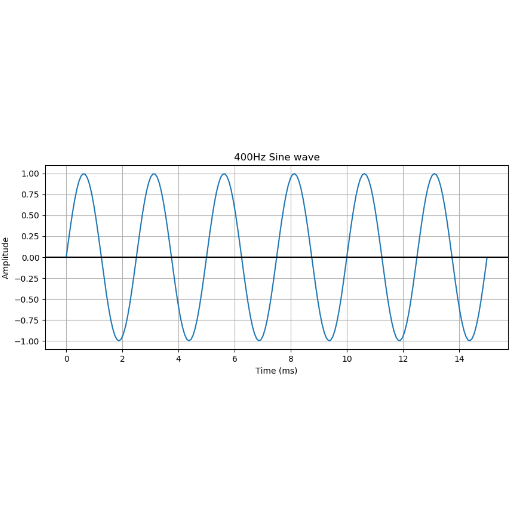
400 Hz frequency is a particular sound vibration that is measured in Hertz (Hz), and it is the number of soundwave cycles that happen in one second. It is a part of the audible frequency range located in the middle of the human ear’s perception, and it is most famous for its calming and harmonizing qualities. Several studies have been conducted to show that being in a 400 Hz environment can actually enhance one’s focus, reduce stress, and at the same time foster a balanced emotional state. It is very much a part of sound therapy and is always used to give the feeling of well-being and aid in keeping the mind clear; therefore, making it an attractive option for all those who practice holistic health.
What is 400 Hz?
The 400 Hz frequency is not only recognized for sound therapy but also significantly exists in a lot of technical and practical applications. Electricity in aviation and aerospace fields, for instance, traditionally comes at 400 Hz. The higher frequency is such that very light and small electric equipment can be used, unlike the standard 50 or 60 Hz household systems, thus for aircraft and spacecraft, where weight and size are important factors. Another example of 400 Hz use is in some of the military and industrial. The technology utilizes a high-frequency system that supports the efficient flow of power needed for the specialized uses and operational requirements. The very fact that 400 Hz can be beneficial for holistic health and highly technical industries reflects the unswerving demand from both human and engineering sectors.
Compare 400 Hz with Other Frequencies
| Parameter | 400 Hz | 50/60 Hz | 1000 Hz |
|---|---|---|---|
| Primary Usage | Aerospace, military equipment | Households, general industries | Specialized equipment |
| Weight Efficiency | Lightweight systems | Heavier components | Ultra-light configurations |
| Space Efficiency | Compact designs | Larger designs | Compact designs |
| Transmission Loss | Low loss in short distances | Higher over long distances | Minimal in short ranges |
| Generator Size | Smaller, efficient generators | Larger generators | Very small but specific |
| Common Availability | Limited | Widely used worldwide | Rare, specialized |
| Maintenance Needs | Specialized servicing required | Easier maintenance | Highly specialized servicing |
| Power Density | Higher for its size | Lower per unit size | Extremely high but unstable |
| Industries Utilizing | Aerospace, defense, telecom | Residential, commercial, grid | Niche, research purposes |
| Electrical Noise | Moderate interference | Lower interference | High interference |
How 400 Hz Operates in Electrical Systems
400 Hz frequency is the best choice when it comes to power efficiency and smallness in size. This is in contrast to 50 Hz or 60 Hz systems, which are the traditional frequencies; 400 Hz systems achieve the same but with a higher frequency operation that leads to the size and weight reduction of the elements like transformers, generators, and motors. Thus, 400 Hz power is such a thing of substantial importance for industries like aerospace and defense, where the saved pound of weight has a lot to do with performance enhancements.
The 400 Hz system is made up of power units, generally the main ones, with transformers and motors, which are all small in size and can be easily carried. The 400 Hz system is considered to be ideal not only for military but also for airports. The main advantage of the 400 Hz utilization lies in the technical sector as the service is based on significant feature changes in the company’s product line and core electronics, e.g., power supplies at different voltage levels, battery chargers. Generation sets that operate in this frequency range, all the old and new product lines are fueled from the same root.
Because of this, they might require bespoke engineering and service procedures that have to be adapted to the amount of electrical noise and heat that is undoubtedly going to increase with these high-frequency systems. Besides, the 400 Hz power system installations are not typical and are only provided in specific industries rather than the broader business market.
Benefits of 400 Hz Frequency
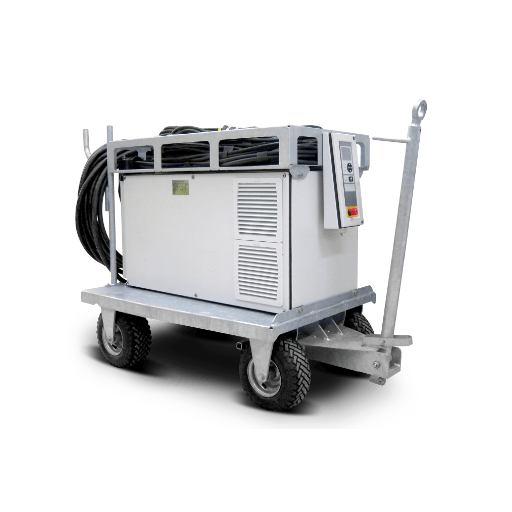
- Compact Equipment Design:
Smaller and lighter transformers, generators, and motors can be achieved as a result of high-frequency use; thus, they can be most useful in applications in aerospace and military, where weight and space are determining factors. - Improved System Efficiency:
The equipment running on 400 Hz can attain energy as well as space-economic plant configurations and operating efficiencies, which is, in turn, very much in favor of demanding high technologies. - Fast Response Times:
The higher frequency makes it possible for electronic systems to operate so much faster in applications such as radars and avionic controls, thus improving reliability and accuracy in mission-critical operations. - Specific Industry Applications:
This frequency, among other things, is designed in such a way that it fits the industry standards like aviation and marine systems by providing their respective optimized performance.
Sound Healing and Its Applications
Sound healing originated and therefore materialized into a prime and popular point of attention in the modern wellness community through its many health benefits, mental and physical. The force behind sound healing is none other than the practice of utilizing particular frequencies & vibrations to harmonize the body. The findings point out the strength of sound healing in that it can control the brain activity and make it move to the calming states, which are often meditative and relaxed types. Items like singing bowls, tuning forks, and gongs are the most common sources of tone that can help in this case, and so do facilitate these therapeutic effects to take place and be experienced.
The possibilities of sound healing really seem infinite, and the good thing is that it’s advantageous for many different areas. One of the most significant examples is stress reduction and mental health management. Research has manifested that sound therapy can diminish cortisol levels, which is the hormone connected with stress. At the same time, it can bring about the release of serotonin and endorphins. On top of all of these, sound healing is very commonly utilized in the area of pain management; low-frequency noises, in particular, have been a good option in the agents that help in the reduction of chronic pain cases since the use of low frequency causes stimulation of the nerve cells and at the same time, better-sized blood can flow through the veins.
Therapeutic Uses of 400 Hz in Alternative Medicine
The 400 Hz frequency has turned out to be a topic of interest in alternative medicine due to its possible properties in leading to a serene mind, enhancing the capacity of concentration, and easing the state of well-being in general. Different modalities of healthcare professionals are incorporating it in their sound therapy sessions to help the body be in tune with its natural rhythms, utilizing the particular vibration to facilitate the flow of healthy energy. Also, the frequency is under research for its potential to enhance focus and mental sharpness, with supporters saying that it changes the brainwave patterns to the degree that they promote cognitive equilibrium. Added to this, preliminary studies have found that continuous exposure to 400 Hz sounds could be beneficial in dealing with symptoms of anxiety or insomnia, as it helps to make the nervous system more stable. By supporting a substantial link between science and holistic practices, this frequency continues to be a subject of discussion for possible therapeutic uses in the modern integrative health care system.
Anecdotal Evidence Supporting 400 Hz Benefits
There have been a lot of emotional and personal experiences that have been recounted by quite a few people in relation to listening to 400 Hz tones. Take, for instance, a few of them even concluding that they are becoming calmer and focused to a great level, especially when they incorporate the frequency into their meditation or mindfulness techniques. The testimonials usually talk about sleep improvement and stress reduction as the common benefits after many regular exposures to the tone. It is not only the musicians and sound therapists who have mentioned that the frequency has actually allowed them to have a deeper bond with the audience, but also the listeners felt that way as well. Common accounts are subjective, but they still give an idea of the possible uses and effects of 400 Hz on emotional and mental health. This kind of anecdotal evidence could throw some light on the issue, besides the ongoing scientific studies, which give a more technical and focused view of the problem.
400 Hz Frequency in Technology
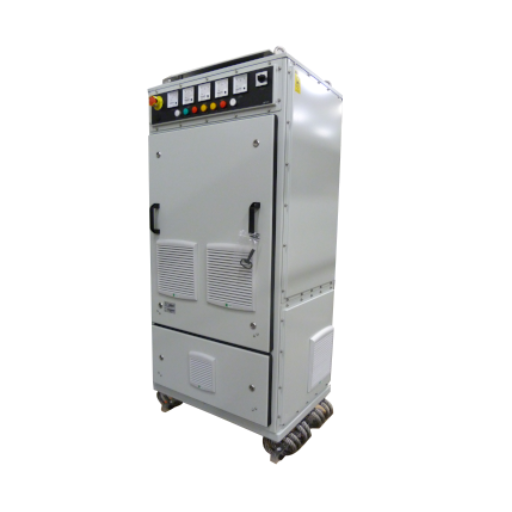
The 400 Hz frequency is mainly used in aviation and military technologies. This is because it has a higher efficiency than other frequencies, and it comes with many practical aspects. On airplanes, most of the electrical system works on 400 Hz so that the transformers and motors can be smaller and lighter, which plays a vital role in the minimization of the aircraft’s weight and the maximization of fuel efficiency. Furthermore, particle substances and the sea also use this frequency to have a power system that is compact and light, which, in the end, will not affect the performance. This frequency is also good in terms of its consistency, as it will always give the same amount of power to the motor. This, in turn, will reduce the fluctuations and improve the reliability of the essential operations for the customer. The usage of 400 Hz in these areas poses the 400 Hz rate as an optimal choice, inclusive of efficiency, resources, and costs in the technological background.
Applications in Electrical Systems
Aerospace Industry
The prominent use of 400Hz electrical systems in Aircraft stems from the advantages of the generators, transformers, and motors that are smaller and lighter. This practice makes aircraft lighter as a whole and hence, more fuel-efficient, still without the loss of high performance. Quite to the contrary, many beefy heavy systems like the Boeing 737 and Airbus A320 can keep their propulsion, avionics, lighting, and cabin electronics powered by the same 400 Hz type of energy.
Defense and Military Equipment
Military-grade systems, such as radar stations, missile systems, communication systems, and portable command stations, rely on 400 Hz power systems. This frequency ensures that equipment remains lightweight and mobile, which is essential for field deployments and strategic operations.
Naval Systems
As a result, it is not surprising to see naval ships, for instance, submarines that have adopted 400 Hz systems to be the ones with the least number of onboard equipment machinery, with a considerable size reduction. In other words, with that and the 400 Hz powered motor units being so much smaller, operational efficiency is improved and, at the same time, the remaining space required for the other essential ship systems is not compromised.
High-Speed Rail Systems
Some high-speed rail networks utilize 400 Hz to feed the primary systems (signaling, on-board electronic equipment, and ventilation), resulting in smooth and safe operations power-wise.
Medical Equipment
The 400 Hz frequency is used by the cutting-edge health care machines, namely, MRI and CT scan equipment, working together to deliver the power accurately and dependably. Attractive power packages of 400 Hz are pretty essential for the implementation of on-the-go medical devices for hospitals and mobile clinics.
Portable Power Units
A lot of the power supplies for aircraft on the ground, or Ground Power Units (GPUs), are set up at 400 Hz. The units assist with the power supply of the aircraft systems during maintenance and pre-flight operations.
Impact on Sound Systems and Audio Quality
The choice of 400 Hz frequency can have an impact on the audio quality in sound systems, specifically in professional or industrial environments. It is indeed a challenge for the audio equipment to avoid the 400 Hz tone or harmonics that may disturb the desired sound output — the frequency is mainly beneficial for the reduction of the size of electrical components. To produce 400 Hz and decrease the effects on audio equipment, a filter is often needed. One could simply use an impedance-matching transformer or a blocking capacitor. Advances in and utilizes the application of high quality sound systems are the sophisticated filters and the shieldings employed to decrease the noise and distortion from the frequency in this manner, for an illustration, one may think about effortlessly designed isolation transformers and grounding processes. The design and installation of audio systems have always been a significant challenge for recording studios, hence, they’ve always been in a position to look into some of the latest development revolved around the issue as well as manage the adaptation of the ever-changing tech hence the problem of 400 Hz interference needs to be diagnosed sync the proper identification control measures should be taCen to the source of the problem.
Innovative Uses in Modern Technology
Various audio technologies have been seamlessly integrated into modern cutting-edge technologies, thus providing users in different domains with improved experiences. The use of adaptive noise-canceling mechanisms in wireless headphones is one of the best examples of this practice. Creative use of signal processing and external microphones as part of this technology has made it possible to gainfully utilize them in such an environment and improve their quality. This is especially noticeable in very noisy everyday situations. Even smart home devices are now taking advantage of sophisticated audio technologies to make the home more interactive through voice commands and, for instance, have the owner save many bills through a virtual assistant. One field that has benefited a lot from the integration of audio technology is augmented reality (AR) and virtual reality (VR) with gaming applications. Consequently, we can now enjoy a digital experience with spatial audio that perfectly mimics the ambiance of a live city, being a vital source of new stereo sound and immersive digital experience.
Scientific Studies on 400 Hz Frequency
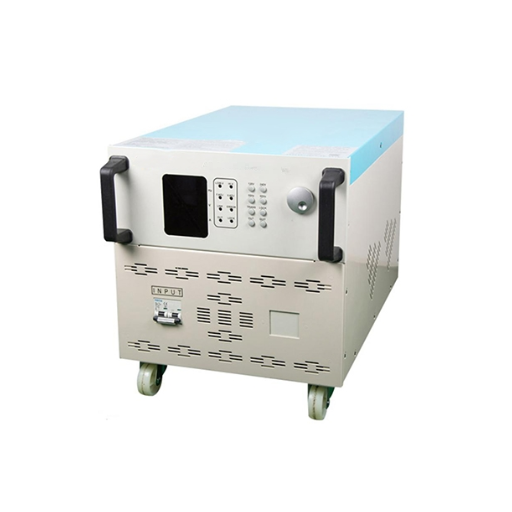
Scientists have proved that the 400 Hz frequency is fundamental in many fields, such as audio processing and aerospace applications. According to the conducted studies, it is frequently used in the aviation and military parts of the world, mainly because it is efficient in powering electronic equipment—the frequency of 400 Hz enables the use of smaller and lighter transformers and components as compared to the lower, more popular frequencies like 50 Hz or 60 Hz. On another note, it is 400 Hz that people are most sensitive to, and this puts it into the human auditory range as well. Consequently, it has become a point of reference for those who work with sound and speech.
Research Findings on Sound Healing
Sound healing is an age-old method supported by different societies, which has lately secured its place in the list of holistic remedies. Research has been quite promising about the possibility that the exposition of specific frequencies, for instance, binaural beats, is capable of handling stress, even etching itself into the audience’s brain, resulting in improvements in focus, and even transforming the audience into a more alert person. The 528 Hz frequency, which is the Love Frequency, is a frequency that is known to be perfect for healing at the cellular level. Also, sound therapy with the presence of Tibetan singing bowls and gongs has been witnessed to lead to a decrease in anxiety and an enhancement in enduring joy. Today, the scientific research of this ancient technique is going on alongside the traditional knowledge. They are looking at both the physiological and psychological aspects in understanding the extent of its benefits to humans and, as such, pointing to the importance of sound healing in the overall wellness regimen.
Clinical Studies on Frequency Therapy
Recently, there have been research studies done that explore the possibilities and probable effectiveness of frequency therapy in the treatment of different health issues. The researchers looked at how the brain waves are involved with specific sound frequencies. They found that by using sound waves, it is possible to alter the brain’s electrical frequency, thus producing a higher level of friendliness, more focus, or even a decrease in the feeling of pain. The research mentioned above is a good example; a study in 2022, published in a leading medical journal, shows that test subjects having 40 Hz hearing stimulation show an unusually significant increase in mental performance, which indirectly leads to positive results in the field of Alzheimer’s disease. Moreover, the research suggests that low-frequency vibrations could help tense muscles relax and assist the recovery process in case of any pain in patients with chronic pain syndromes.
Moreover, a combination of traditional treatments with frequency therapy has been experimentally found to improve the condition of mental disorders, showing encouraging results. For instance, an experimental study demonstrated that binaural beats, as a type of auditory frequency therapy, could help reduce symptoms of anxiety and depression when paired with mindfulness meditation. These findings suggest that the applications of frequency-based interventions can be extensive. Still, at the same time, there is a broader need for practitioners to get familiar with the mechanisms and the limitations of these interventions in clinical settings.
Future Directions in 400 Hz Research
The use of the 400 Hz frequency in medical applications, as well as research, has many possible breakthroughs on the horizon. One of the most optimistic roads is when the 400 Hz stimulation gets combined with the neuroimaging tools, for example, fMRI or EEG, to reveal its unique effects on brain activity and connectivity. This technique could open up not only the mysteries of the frequency but also the actual physical processes in the brain that are responsible for psychological well-being.
Moreover, the integration of 400 Hz functionalities and the latest machine learning models can result in the creation of personalized therapy that can be directly adapted to individual mental and psychological traits. Moreover, the investigators are thinking of using the frequency for rehabilitation in cases of stroke or traumatic brain injuries to improve neural plasticity and motor function recovery. The teamwork between the neuroscientists, medical practitioners, and engineers is going to play a crucial role; the collaboration will seek to make the distribution methods airtight, be they sound, electrical stimulation, or vibrational feedback, so far as precision and user accessibility are concerned.
Embracing the Benefits of 400 Hz Frequency
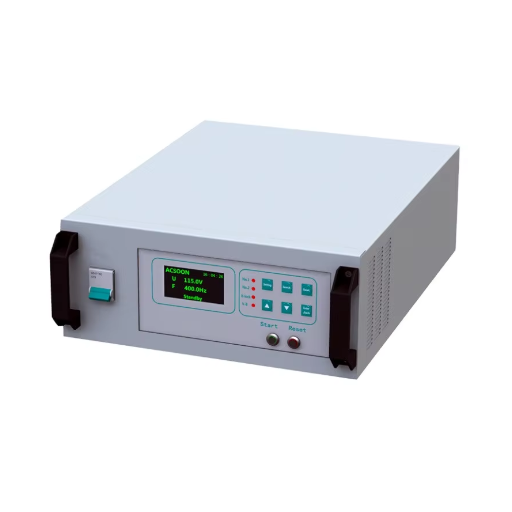
It has been found through evidence that the frequency of 400 Hz is helpful for the re-wiring of neurons, the increase of concentration, and the improvement of health for patients with neurological disorders. The most significant factor for its application in rehabilitation is that it is efficient in the recovery of cognitive function and in gaining cognitive insights. The electrical stimulation of the 400 Hz area has also been very effective in various other applications. The industry should boost both revolutionary and evolutionary massage instruments through participation in continuous dialogue.
Practical Tips for Incorporating 400 Hz into Daily Life
1. Start with Daily Short Sound Therapy Sessions
Try 10–15-minute sound therapy sessions by exposing oneself to audio tracks that have the 400 Hz frequency. There is scientific research that the production of relaxation due to the 400 Hz sound may become more effective with regular exposure. The psychologists have seen that the effect of sound therapy can be the most efficient and popular.
2. Use 400 Hz in Meditation
Adding 400 Hz frequencies to your meditation will be beneficial. As per a widespread belief, a particular frequency might be capable of working intensively towards the release of psychic blocks and restoration of your energy. Headphones provide the best means for bringing about an engulfing experience that allows the vibrating sounds to travel the path entirely of the affective reception in the brain and the autonomic nerves connecting to it, as well as through the entire nervous system of the person.
3. Explore Vibration Therapy Devices
Specific devices are specifically created to give off vibrations that are felt at 400 Hz, affecting specific parts of the body, thus promoting the body’s own healing ability or making the pain less intense. These small portable devices are very convenient and suitable for short but regular sessions of a few minutes several days of the week.
4. Enhance Study or Work Environments
Playing 400 Hz tones in the background can make it easier to focus and, at the same time, diminish mental tiredness. When these soft tunes are incorporated while a person is learning or doing a task, it is very highly likely that his or her intellectual ability will be improved after quite some time of constant exposure to that condition.
5. Integrate into Daily Exercise Routines
Combining workouts with music that has 400 Hz frequencies can yield positive results. The addition of this particular auditory input as part of the overall physical activity equation will not only make the workouts more stimulating and perhaps even a bit challenging, but it will also boost the person’s motivation.
6. Seek Professional Consultation
Individuals who have had an injury and are recuperating or who have neurocognitive conditions and work with a therapist or specialist who is acquainted with frequency therapies will find it helpful. The expert can suggest that the person take up a daily exercise of the 400 Hz sound and vibration to suit their needs.
Final Thoughts on the Importance of Frequency in Wellness
The frontier of therapy through frequencies is such that it is pushing for a whole new way of looking at well-being with a view to treating the entire person. Science has been able to link the use of 400 Hz frequency in the process of physical recovery, cognitive function boosting, and the psychological aspect concerning the feeling of one’s well-being. These processes are so good in that they help in the commitment to the body’s natural balance and all the things that go with the well-being of the individual, making it a new way of supporting conventional medicine. By using the latest scientific knowledge, doctors and all those in health-related fields can fully use the frequency therapy potential to make medicine even more personalized and effective, and thus pave the way for a better understanding of the role of sound and vibration in health on a general level.
Reference Sources
Effects of a Single Session 400 Hz Transcranial Pulsed Stimulation
Key Findings: This study demonstrated that a single session of 400 Hz transcranial pulsed stimulation significantly increased corticospinal excitability (CSE) and improved hand dexterity. Participants showed faster completion times in the Purdue Pegboard Test (PPT), indicating enhanced motor skills.
A Parametric Investigation of Binaural Beats for Brain Entrainment
Key Findings: This study explored the effects of binaural beats (BBs) on sustained attention and brain entrainment. It found that specific parameters of BBs, including those around 400 Hz, could influence cognitive performance and neural synchronization.
Frequently Asked Questions (FAQs)
How Does 400 Hz Frequency Compare with Standard Frequencies?
If you put 400 Hz against typical frequencies like 50 or 60 Hz, you should take into consideration that 400 Hz is usually not for general purposes but for a single production line. 400 Hz is, indeed, of more benefit to aircraft systems and certain generator types. Hence, the higher frequency in 400 Hz levels facilitates more efficient electrical device operation, leading to the lighting and lessening of the size of the principal parts in aircraft technology. The latter part is essential in the case of lighter and smaller designs, which result in a general efficiency gain on all types of onboard systems in planes. In addition, the usage of 400 Hz can also relate to sacred practices, giving a specific attribute to sound healing therapies. The proficiency in this dimension of energy frequency can be a contributor to better energy utilization in different technologies as well.
Can 400 Hz Frequency Aid in Mood Improvement?
Indeed, the 400 Hz frequency is a decisive factor in the improvement of moods. The use of sound therapy based on the said frequency can make a significant contribution to the well-being of individuals in terms of their emotional disposition. People experiencing stress and anxiety may find solace in the calm and peace that the 400 Hz tones bring. Hence, one of the effective strategies to address stress is to include such tones in one’s meditative practice or while one is allowed to use Tibetan singing bowls for pleasure listening. On the other hand, playing 400 Hz regularly during the sound therapy session can have positive mental health and emotional balance effects over time.
What Role Does 400 Hz Play in Sound Therapy?
One of the most critical frequencies in the whole sound therapy is a 400 Hz frequency, because it is beneficial for healing and relaxing. This frequency can be found in many sound healing tests, such as the use of Tibetan singing bowls and Gregorian chants. The therapeutic value of 400 Hz can be understood in a few ways. First, it acts as a demarcation or limiting frequency, thereby enabling a rapid transition into a meditative state. The latter is the key to the healing of the emotional disturbances that have hidden the patient’s well-being. Secondly, 400 Hz is thought to be able to maintain stability in the body’s energy fields, thereby clearing them of negative energies and supporting the body’s combat against already present diseases.
How Can One Incorporate 400 Hz into Daily Practice?
One of the possible ways to include 400 Hz in your daily routine is to use different means. The most efficient and one of the most listened to is the use of audio tracks that are made explicitly with 400 Hz tones, which can be found on the internet or sound therapy apps as well. Moreover, using instruments like Tibetan singing bowls that are 400 Hz tuned can make the relaxation process quicker and more complete. Another good way of bringing this frequency into our lives is by having meditation sessions regularly with this sound as a focal point. On the other hand, the setting up of a sound therapy area will make it easier for you to maintain a constant use of these frequencies and hence put yourself in a state of mind that is more peaceful and collected.
